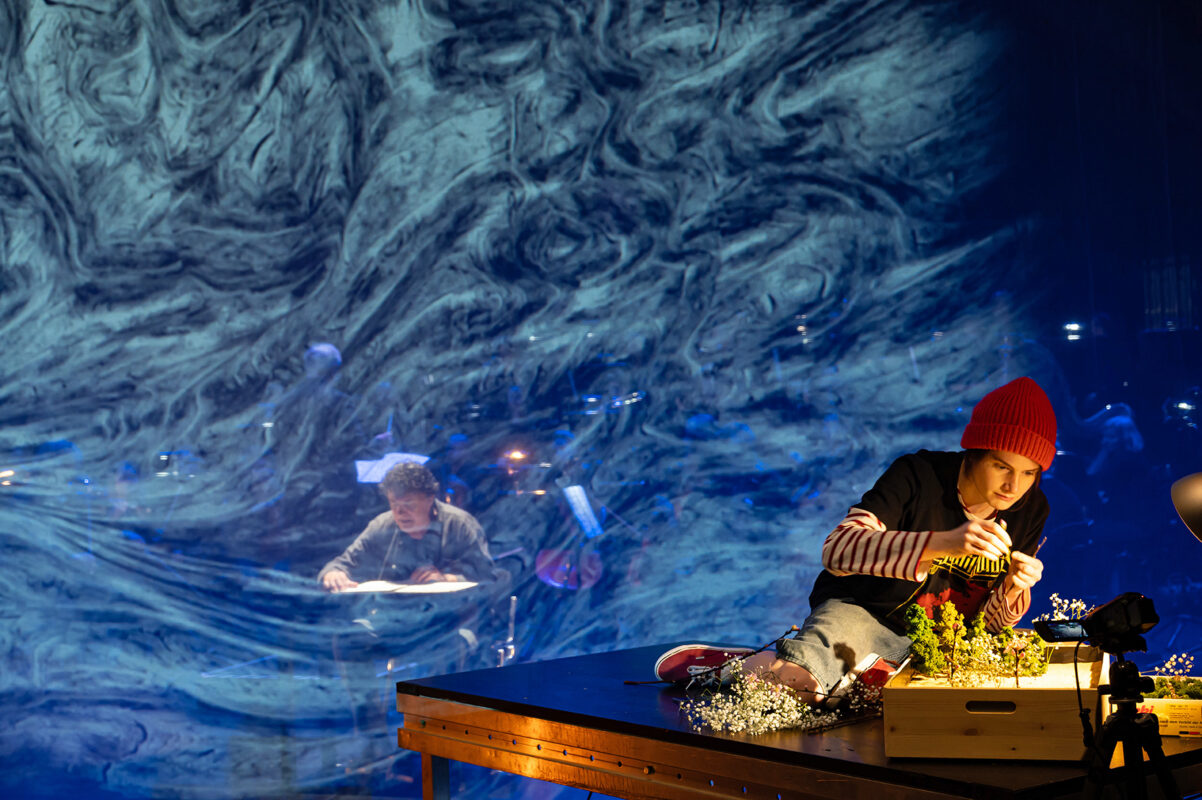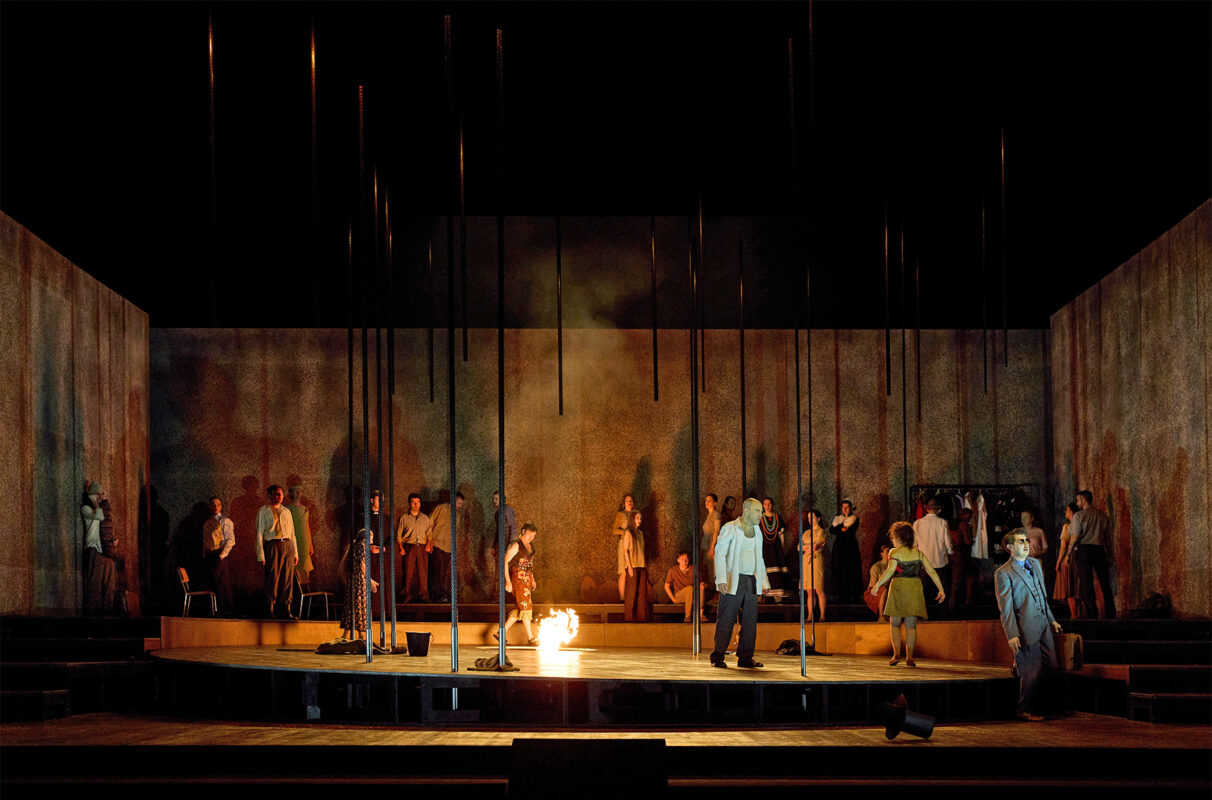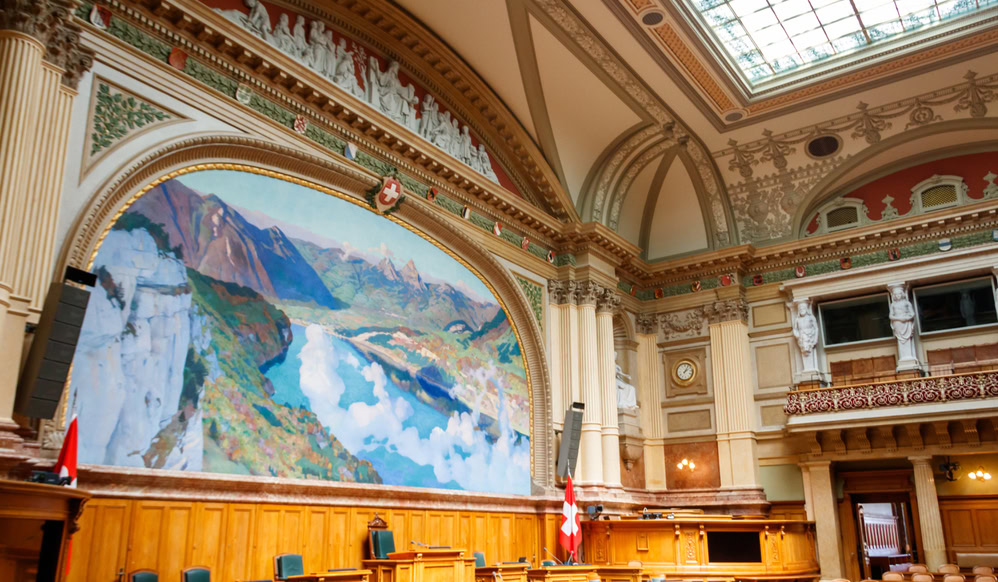The big noise
From September 11 to 15, the Bern Music Festival made it roar, rumble and rumble. Almost too many impressions - and a reference to Luigi Nono.
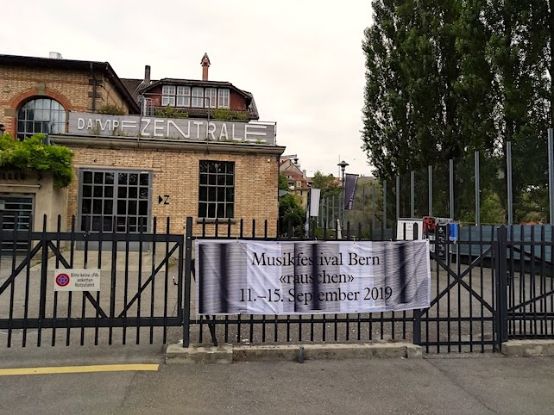
Es war viel los an jenem Wochenende Mitte September in der Szene für zeitgenössische Musik, man hätte gleichzeitig das Festival Rümlingen, die Zeiträume Basel und das Musikfestival Bern besuchen können. Besonders ärgerlich, dass sowohl Basel als auch Bern einen Luigi-Nono-Schwerpunkt anboten. «Geplant war das Festival in Bern eine Woche früher», kommentiert Geschäftsführer Andri Probst die unglückliche Überschneidung, «aber an diesem Datum fand die Wiedereröffnung des Casinos Bern statt, wir mussten ausweichen.»
The Bern Music Festival is supported by numerous Bernese institutions and ensembles from the field of classical music and related areas. This common umbrella gives more weight to experimental organizers in particular, and one theme ensures unity: after "Irrlicht" and "unzeitig", this time it was "rauschen". The festival takes place annually and offers an almost unmanageable wealth of concerts, performances, workshops, public rehearsals and talks. "Projects can be submitted according to the theme. A board of trustees consisting of Daniel Glaus, Susanne Huber, Thomas Meyer and Martin Schütz then selects the entries," says Andri Probst, describing the programming process.
The aim is to break out of the usual concert patterns: closer to the audience, more open to experimentation. Flexibility is the keyword, and it applies equally to the performers and the audience, who rarely know what to expect.
Three compositions about Klee
To really get involved in the "Rauschen", you also had to bring a lot of time with you this year. This was also the case on Thursday, when a concert with Helena Winkelman (violin) and Irina Ungureanu (soprano) was scheduled for midday at the Zentrum Paul Klee. Nadir Vassena, Helena Winkelman and Alfred Zimmerlin had each been commissioned to compose a piece based on a painting by Paul Klee. On a small format, Klee has set the ancient Chinese poem To the sound of water and drums "composed" together in colors, shapes and letters. An exciting starting point, which the three composers approached in very different ways.
Nadir Vassena places the noise, the quiet meandering and groping forward with violin harmonics and piano-breathed fragments of words in the singing voice at the center. Helena Winkelman is completely different, jumping into the work as it were, conquering rhythmic and colorful fields by grouping the music around words such as "Trommel" or "Glückes Lust!": a piece with rough edges and yet a propulsive drive - interpreted in a captivating way. Alfred Zimmerlin then extroverted: The poem is powerfully recited once through, accompanied by an electronically generated rhythm that soon turns into noise and destroys the "live music". Between the works, Christian Grüny philosophized about Klee's text and image structure. It was an exciting, demanding hour that challenged the ears and mind to the utmost.
From cardboard rumbling to breathing clarity
Afterwards, we went to two installations at the Dampfzentrale. The Bernese know the location, but visitors from out of town had to find their way around, as there was no description in the program. There you were greeted by 189 cardboard boxes hung close together, which moved thanks to 42 motors. The sculpture created by Zimoun (*1977) rustled, murmured and rumbled incessantly and quietly: an industrial hall with a meditative charm that even children couldn't resist. A school class listened to the unusual sounds under the guidance of Tobias Reber.
-
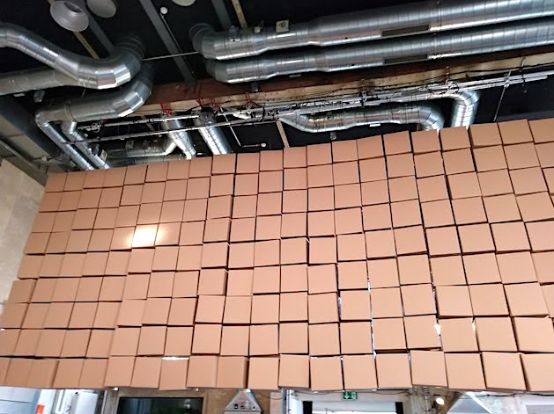
Zimouns rauschende Kartonwand: 42 prepared dc-motors, 189 cardboard boxes 35x35x35 cm. Foto: SMZ
Before installation Out there by Werner Hasler (composition) and Hugo Ryser (scenography and projection), Reber warned: "It's going to be very loud." He was not understating the electronic "noise bombardment". Six screens were set up in a circle in the dark room, with the wave patterns projected onto them further confusing the senses.
The only thing left to do was to flee, back to Paul Klee, where an education project was waiting: In Noise censored 120 schoolchildren learned how to "really rustle" with everyday objects under the guidance of Mirco Huser and Tim Reichen. Arranged around the audience in the room, they scraped wildly for forty minutes with plastic bottles, brushes and plastic bags, stomping and the like. At one point, a "one-two-cha-cha-cha" could be heard - otherwise a lot of chaos and an imposition for the audience.
Everyone was looking forward to the concert in the cathedral that evening: Christina Daletska, the Gabrielichor Bern and the Vokalensemble Zürich under the direction of Andreas Reize and Peter Siegwart transported listeners into a wonderful world of sound. In works by Giovanni Gabrieli, Luigi Nono and Gabrielle Brunner, a "spatial music" typical of Venice unfolded. At the center La fabbrica illuminata (1964) and Breathing clarity (1980-83) by Luigi Nono, to whom the festival paid tribute. The successful conclusion to a heterogeneous day full of experimental adventures.






